We may receive a commission when you use our affiliate links. However, this does not impact our recommendations.
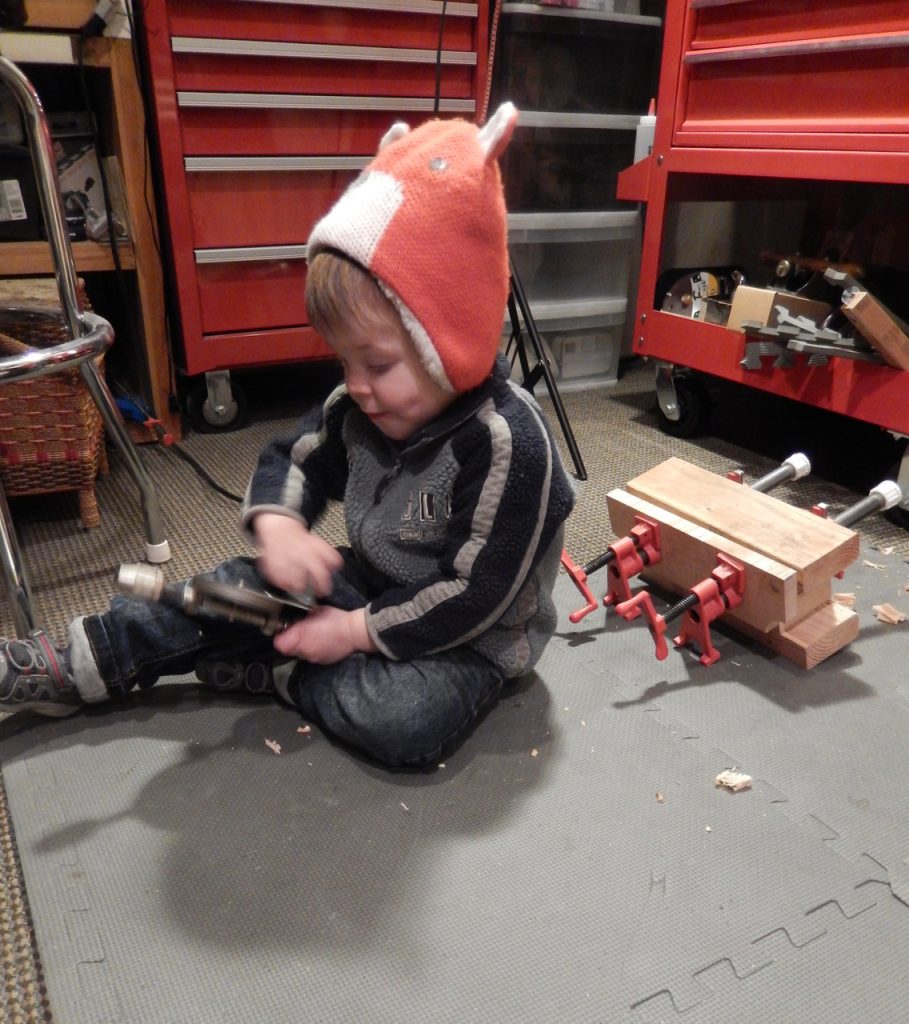
Asher, who turned two last week, shows a promising appetite for woodworking tools. He is a frequent visitor to my home shop, where he examines the tools that he can reach. Mainly he’s drawn to clamps, bench bulls and, recently, a great looking Stanley Handyman hand drill that I salvaged from the trash two months ago. When I say “I salvaged from the trash” I mean I actually picked it up from the back end of our local garbage truck as it slowed down at the curb of our house to pick up our trash.
That morning we were, and not for the first time, late in bringing our trash cans to the curb. As I heard the roaring truck climbing up the hill, I rushed outside and dragged our cans up the driveway just in the nick of time to personally hand them over to the waste management specialists. As I met and greeted the guy with the orange safety vest, my eyes veered behind him to the back of the truck where I spotted an open tool box on top of a pile of bags and raw garbage waiting to be crushed by the mighty compactor. Inside it, I spotted an old-fashioned gray and red hand drill that looked almost brand new. Without hesitation or a blink of embarrassment, I asked the guy if I could save the tools. After he gave his nodding consent, I seized the moment and fished out the partially opened box and the drill. I thanked the guy and after we exchanged a few commiserating words about the amount of good stuff that goes to waste each day, then I went inside to examine my finds.

The good news was that the drill was in perfect shape, hardly used and it came with the original bit kit that was elegantly stored inside the wooden handle. The even better news was that the drill bevel gear wheel was made from ferrous metal (I guess it was cast iron), which means it is heavier and stronger than the die-cast gear found in cheaper hand drills.

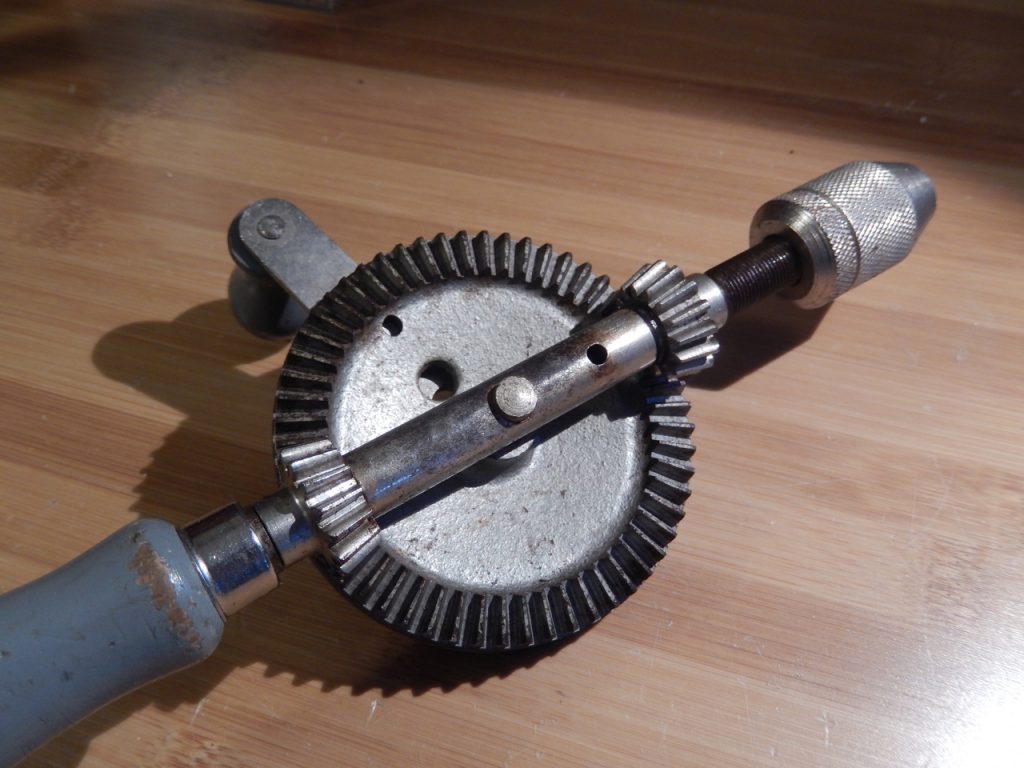
After cleaning the drill with mineral spirits, all that was left to do was lubricate the gears and the bearings. In the past I would have resorted to the iconic 3-in-1 oil, a petroleum-based oil that is used around the house for all kind of chores, from silencing squeaky hinges to smoothing out the chain of a kid’s bike. But as I’ve learned over the years, most petroleum-based oils and greases gradually congeal as a result of heat and oxidization, creating a gooey mass that works against the very purpose of lubrication. You have probably seen this phenomenon – a brown build-up of stickiness around hinges and moving parts – and now you know the reason for it.
So what are the alternatives? In two words: synthetic lubricants. Synthetic oils and greases (which are also a derivative of petroleum) maintain their original viscosity for a long long time. They will not change color to brown and will not cake up. After a quick search on Amazon I ordered an oil and grease made by Super Lube that had good reviews, and used it on the bevel gear and the shaft’s bearings.
 The drill works fantastically and Asher is mesmerized by its mechanism. But there is one big problem with giving a baby (or a child) an open-geared tool: They can pinch their tiny fingers between the gears – something that every anxious parents wants to avoid. So what can I do if I want to nourish his fascination with a moving-parts tool? The answer is a closed-gear drill press, which I will write about next time.
The drill works fantastically and Asher is mesmerized by its mechanism. But there is one big problem with giving a baby (or a child) an open-geared tool: They can pinch their tiny fingers between the gears – something that every anxious parents wants to avoid. So what can I do if I want to nourish his fascination with a moving-parts tool? The answer is a closed-gear drill press, which I will write about next time.
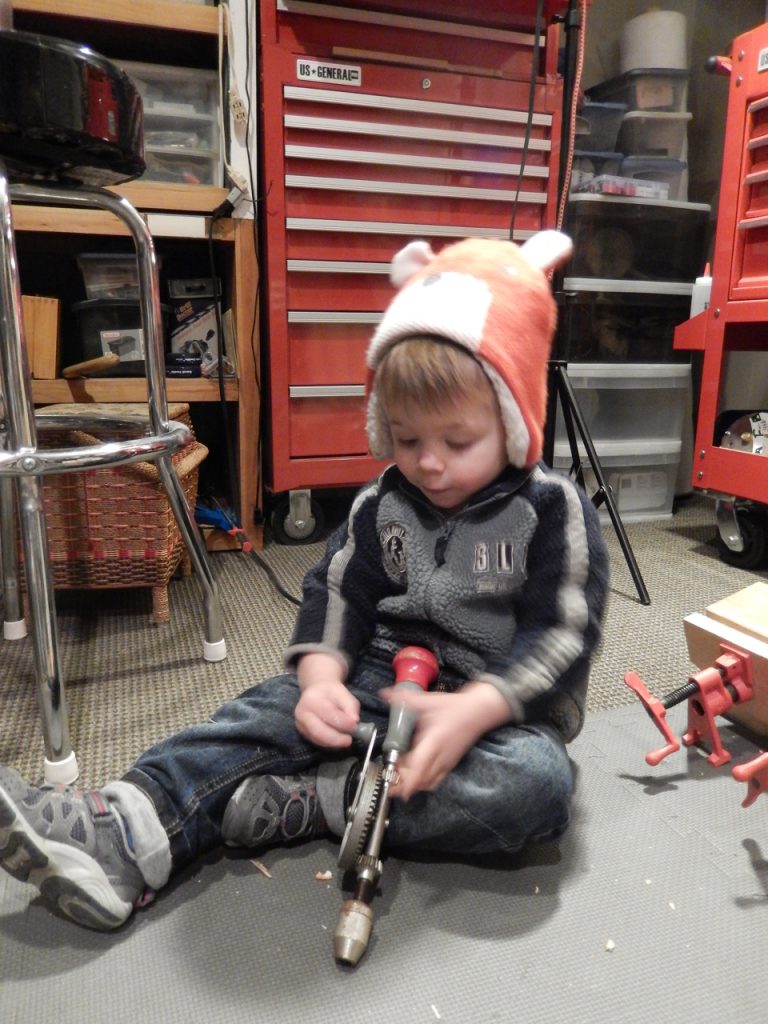
Toddlers can pinch their tiny fingers between the gears… ouch.
P.S. I am not a chemist (nor am I affiliated with the Super Lube brand), so I welcome any feedback on the issue of lubrication alternatives for woodworking tools.
Here are some supplies and tools we find essential in our everyday work around the shop. We may receive a commission from sales referred by our links; however, we have carefully selected these products for their usefulness and quality.







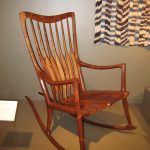
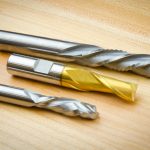
My 3 year old has also had a fascination with braces, eggbeater drills, and breast drills. He’s only gotten his fingers a couple times, and quickly understood what had happened. Currently he prefers the yankee push drills though. The larger diameter bits actually survive pretty well. I put masonry bits in the other drills to limit the amount of damage he can do, and provide a margin of safety. As an aside, a 3 year old can drill through a cement floor with a brace….
You can get closed-gear eggbeater drills. The Stanley 610 (three for sale on eBay as I write this) and the Millers Falls “Buck Rogers” (two for sale on eBay) are probably the two most common.